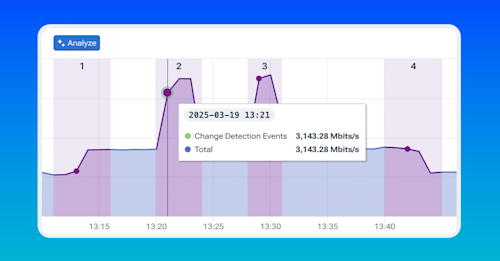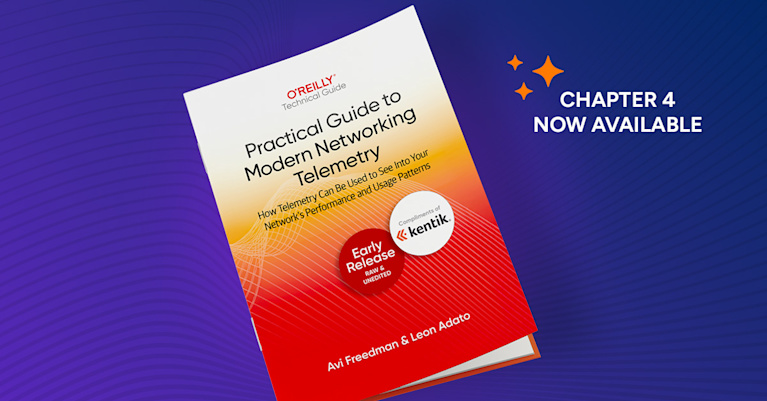Why (Enriched) Flow Data Belongs in Every Network Operator’s Daily Toolbox

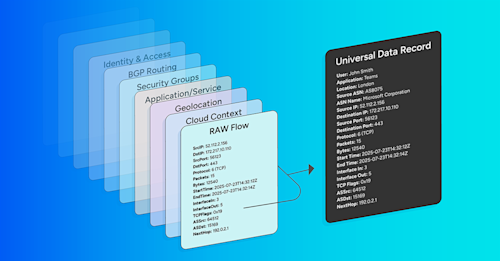
Summary
Flow data has always held immense potential, but was often inaccessible because it lacked context and speed. Kentik removes that friction by automatically enriching flow with human-readable context, making it a daily driver for everyone, not just specialists.
For many network operators, flow has long been treated like a luxury: nice to have, but not essential. Metrics (until recently provided solely by the now-aging SNMP), by contrast, felt easier, more intuitive, and “good enough” for keeping the network alive. After all, it can often be enough to identify a problem if you know a device is showing high CPU or interface errors. Fix the device, fix the problem. Who cares what traffic is crossing it, so long as it’s staying green?
But that mindset is a holdover from an earlier era, one shaped by the limitations of legacy flow tools, not of flow data itself. Those tools could barely get beyond surface-level stats like top talkers or port usage. Helpful, sure. But hardly enough to tell you what’s really happening.
Today, modern flow platforms like Kentik go beyond log collection to build contextual network intelligence. They reveal how network performance affects and is affected by application performance, service delivery, and other business outcomes. By enriching raw flow data with business, cloud, and application intelligence, these platforms transform it into usable network insight for daily operations.
A few weeks ago, I wrote about the importance of having a tightly unified platform for both flow and metrics and the benefit operators can realize by having both those sources of information combined for context. In this post, I want to look at why enriched flow deserves a spot in every operator’s daily workflow – and how Kentik makes it easy to get there.
Learn how AI-powered insights help you predict issues, optimize performance, reduce costs, and enhance security.
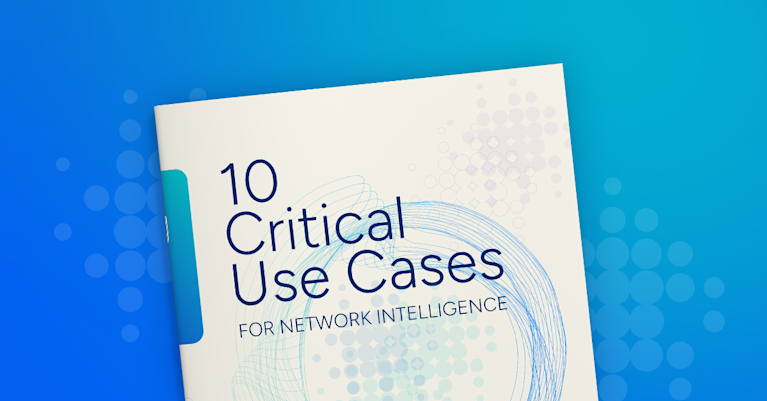
What is flow enrichment?
Flow enrichment is the practice of adding human‑readable context to otherwise opaque network flow logs. Instead of only storing a five‑tuple (source/destination IP, ports, protocol, and byte counts), a flow enrichment pipeline correlates each record with data from other sources. For example, DNS and GeoIP databases, user directories, routing tables, cloud metadata, and threat‑intelligence feeds.
This metadata helps answer questions like “Who is generating the traffic?”, “Which application is involved?”, and “Where is it coming from or going?” By attaching these details as flow is ingested, flow logs become rich, actionable records that can improve security, performance, and business decisions.
Imagine flow enrichment as turning a basic network traffic log into a rich, insightful narrative. Traditional flow data tools typically give you limited insight – just IP addresses, ports, protocols, timestamps, and data volumes.
A typical traditional flow record might look something like this:
SrcIP: 10.1.1.10
DstIP: 172.217.10.110
SrcPort: 56123
DstPort: 443
Protocol: 6 (TCP)
Packets: 15
Bytes: 12540
StartTime: 2025-07-23T14:32:12Z
EndTime: 2025-07-23T14:32:14Z
InterfaceIn: 3
InterfaceOut: 5
TCPFlags: 0x19
ASSrc: 64512
ASDst: 15169
NextHop: 192.0.2.1 This baseline data can be useful for basic things like understanding top talkers on your network and what ports are most in use. However, it falls short of providing actionable context and is very difficult for humans to use to identify trends or patterns.
- What are those source IPs?
- Where, geographically, are those IPs located?
- What application is sending the traffic?
- How was it routed?
These are key questions meaningful to understanding the context of the traffic relative to the business’s needs.
So if a flow log in its raw form is of limited utility, how do you make it more valuable for running your business?
Enter Kentik.
When Kentik receives raw flow logs – whether from NetFlow, IPFIX, sFlow, or cloud-native logs – they contain very limited details. Just source and destination IPs, ports, protocols, byte counts, and timestamps. To make this data truly insightful, Kentik uses a sophisticated real-time enrichment pipeline that attaches additional metadata tags to add context from dozens of additional sources, such as:
- SNMP polling to discover crucial details for on-prem devices like interface names, speeds, and device roles.
- Cloud API ingest that adds context like which cloud providers’ traffic originated from, in what regions, from what instance IDs, etc.
- DNS and GeoIP lookups to automatically resolve hostnames and geographic locations for easier analysis.
- BGP routing context, such as ASN, next-hop, prefix origin, and BGP ultimate exit, helps understand and visualize network paths.
- Custom metadata that customers configure and provide from other data systems to help with things like chargeback reporting, assigning network patterns to different departments, and understanding things like transit costs.
- Kubernetes and app context to quickly identify what applications or application types are driving traffic.
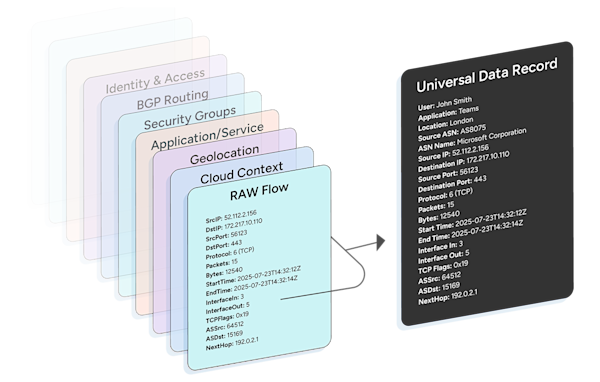
Speed matters
Now, enriching flow data with metadata isn’t a new concept. What is unique about Kentik is the speed and efficiency with which we do it – and the performance our platform delivers.
Traditional systems often store flow and metadata separately, joining them only at query time. That might work for small datasets, but it quickly breaks down at enterprise scale, especially when you’re dealing with unsampled, high-volume traffic.
Kentik’s architecture eliminates that performance bottleneck by enriching flows at ingest – before the data ever hits the database. These fully enriched records are stored at high fidelity in the Kentik Data Engine (KDE), a purpose-built backend optimized for wide records and ultra-fast queries across massive datasets. (Fun fact: in 2024, Kentik ingested over 540 trillion flow records, or about 226 TB/day!)
This speed matters because it keeps context intact from the moment of collection to the moment of analysis, letting operators make decisions with the full picture already in hand.
For example, suppose you wanted to identify excessive transit gateway costs between two cloud availability zones. With traditional tools, you’d need to gather flow logs, cross-reference cloud account details, and manually correlate traffic paths. With Kentik, enrichment tags from those cloud environments already include the availability zone, region, and even the type of gateway or interface – added at the point of ingestion. You simply filter or group by those dimensions in Data Explorer and spot the issue instantly.

What are the benefits of flow enrichment?
In today’s increasingly complex environments, enriched flow isn’t just nice to have – it’s one of the most versatile and valuable tools to drive network intelligence. Once armed with meaningful context, flow can become a powerful lens into network behavior, uncovering insights that were previously difficult or impossible to access with metrics or basic flow alone.
For example, instead of just seeing that a device is dropping packets or hitting high CPU, having enriched flow data in the same platform also tells you what traffic is involved, where it’s going, who is sending it, and why it might be happening. You can drastically increase your ability to determine causality between discrete network events. This reduces guesswork and accelerates resolution.
A few practical examples:
Faster troubleshooting
Say a user reports poor application performance. With enriched flow, you can immediately trace the path of the traffic, identify any intermediate devices or links introducing delay, and correlate that with known infrastructure behavior – all without jumping between tools. Without enrichment, you’d be stuck manually identifying IPs, translating interface IDs, and cross-referencing with other systems to even understand the scope of the problem at worst. Alternatively, asking platforms to merge datasets at the time of query can cause delays. Kentik does all of that upfront so you can actually start troubleshooting right away, not waste time gathering data.
Proactive optimization
Enriched flow reveals under- or over-utilized links, noisy applications, or misconfigured paths. For instance, you might spot consistent spikes in backup traffic using high-priority quality of service (QoS) classes. Because enriched flow tags include interface roles and application identifiers, Kentik makes it easy to uncover these patterns and adjust policy or topology accordingly.
Security and segmentation
By tagging flows with application, geo, and business metadata, it’s easier to spot unexpected traffic patterns – like sensitive data moving between internal departments or to untrusted regions – making policy enforcement and threat detection more effective. Without enrichment, these patterns are nearly invisible unless you already know what to look for.
Cross-team collaboration
When flows are labeled with operational context – like cloud instance IDs, geographic regions, application names, or Kubernetes namespaces – app owners and DevOps teams no longer need to interpret raw IPs. They can see traffic in terms they understand, enabling smoother cross-functional investigations and more effective communication between teams. Enrichment provides the shared language that lets teams collaborate using a unified view of the network.
Making flow truly usable
Flow data has always held immense potential value, but it hasn’t always been very accessible because it lacked context and speed. Understanding flow often required specific skills, intuition, and/or a trip to the Splunk team just to answer a simple question. That created friction and kept flow from being a reliable part of everyday operations – especially when metrics worked well enough.
Kentik is removing that friction by automatically enriching flow with intuitive, human- and business-readable context. We combine flow data with the metrics you rely on daily, enabling quick pivoting, and enhance this further with AI tools to help you analyze and make sense of it all. Kentik makes flow usable by everyone, not just specialists. Even business stakeholders without deep network expertise can get meaningful insights from flow data. It’s no longer just a forensic tool used during post-mortem analysis or a nice-to-have for network observability; it’s a daily driver for insight, optimization, and network intelligence.
Ready to experience how enriched flow can accelerate your workflows and enhance your network operations? Start a Kentik trial or reach out. We’d love to connect.
